Luffy /2/ 后台数据库配置&前台创建配置
作者:互联网
二次封装Response
utils/reponse.py
from rest_framework.response import Response
class APIReponse(Response):
# 将父类的status重名http_status
def __init__(self, status=100, msg='成功', http_status=None, template_name=None, headers=None, exception=False,
content_type=None, **kwargs):
data = {
'status': status,
'msg': msg
}
if kwargs:
# kwags接收除了处初始化规定的参数以外的参数,也用于更新字典
data.update(kwargs)
super.__init__(data=data, status=http_status,
template_name=template_name, headers=headers,
exception=exception, content_type=content_type)
后台数据库配置
命令操作
# 创建数据库
create database luffy default charset=utf8;
# 创建用户并授权
## 查看用户
### 5.7之前版本
select user,host,password from mysql.user;
### 5.7往后的版本
select user,host,authentication_string from mysql.user;
## 创建用户
### 授权账号命令:grant 权限(create, update) on 库.表 to '账号'@'host' identified by '密码'
## 这里授权所有权限
grant all privileges on luffy.* to 'luffy'@'%' identified by '7410';
grant all privileges on luffy.* to 'luffy'@'localhost' identified by '7410';
## 刷新权限表
flush privileges;
pycharm连接
## 项目配置文件加入
'default': {
'ENGINE': 'django.db.backends.mysql',
'NAME': 'luffy', # 数据库名字
'USER': 'luffy', # 用户名
'PASSWORD': '7410',
'HOST': '7410',
'PORT': 3306
}
然后再登录查看数据库只能查看luffy库
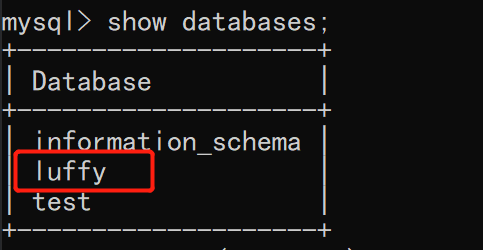
django操作mysql
方式一
模式使用MysqlDB来操作,MysqlDB在python3.x以后不存在了
方式二
使用pymysql替换,django2.0.7版本及以上,如果使用pymysql替换,需要改django源码
import pymysql
pymysql.install_as_MySQLdb()
不改报错:AttributeError: 'str' object has no attribute 'decode'

query = query.decode(errors='replace')
# 改成
query = query.encode(errors='replace')
所以不推荐改源码这种形式
推荐使用mysqlclient模块,其实就是MysqlDB在python3.x以后使用的版本,只不过变成了mysqlclient,使用mysqlclient不需要写两句话,不用改源码
如果装mysqlclient报以下错,可参考:
下载成功可以使用pycharm连接一下
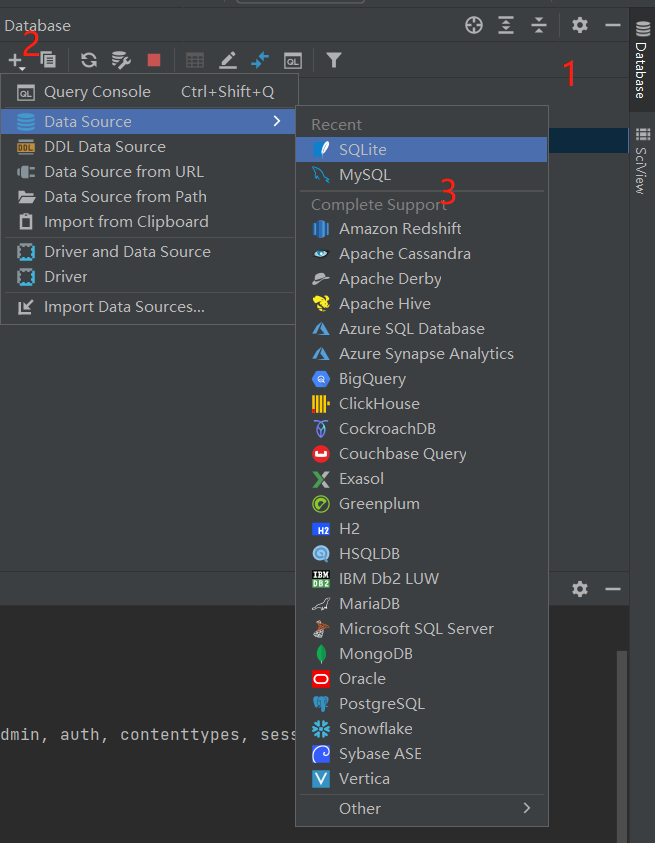
user表设计
这里基于auth的user表扩写,千万要注意,扩写好之前不要先迁移数据库,如果迁移了就不行了
如果你已经迁移了,删除数据库,删除所有的migrations文件,包含你自己的app,和auth和admin这两个app
# 用户板块---》做成app
python ../../manage.py startapp user
# models.py
from django.db import models
from django.contrib.auth.models import AbstractUser
class User(AbstractUser):
mobile = models.CharField(max_length=11, unique=True) # 唯一,长度11
# 需要pillow包的支持 ImageField继承自FileField
icon = models.ImageField(upload_to='icon', default='icon/default.png')
class Meta:
db_table = 'luffy_user'
verbose_name = '用户表'
verbose_name_plural = verbose_name
def __str__(self):
return self.username
setting/dev.py
# 配置文件---》注册表
INSTALLED_APPS = [
'user',
]
# 自定义User表
AUTH_USER_MODEL = 'user.User'
## 配置media
MEDIA_URL = '/media/'
MEDIA_ROOT = os.path.join(BASE_DIR, 'media')
安装pillow模块
# 安装pillow
pip install pillow
'''
Pillow是PIL的一个派生分支,但如今已经发展成为比PIL本身更具活力的图像处理库。pillow可以说已经取代了PIL,将其封装成python的库(pip即可安装),且支持python2和python3,目前最新版本是3.0.0
'''
迁移
python manage.py makemigrations
python manage.py migrate
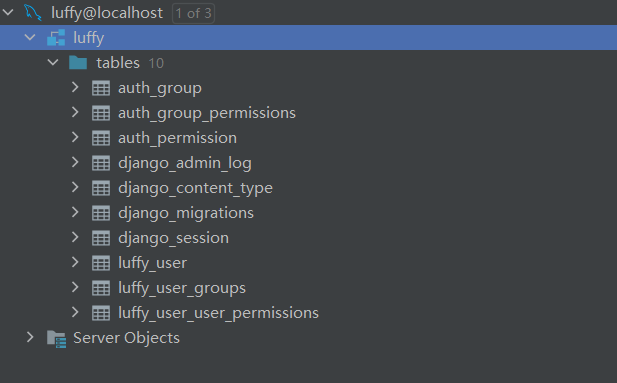
前台创建及配置
我的是win平台,建议使用管理员打开cmd创建
# 创建项目
vue create luffycity
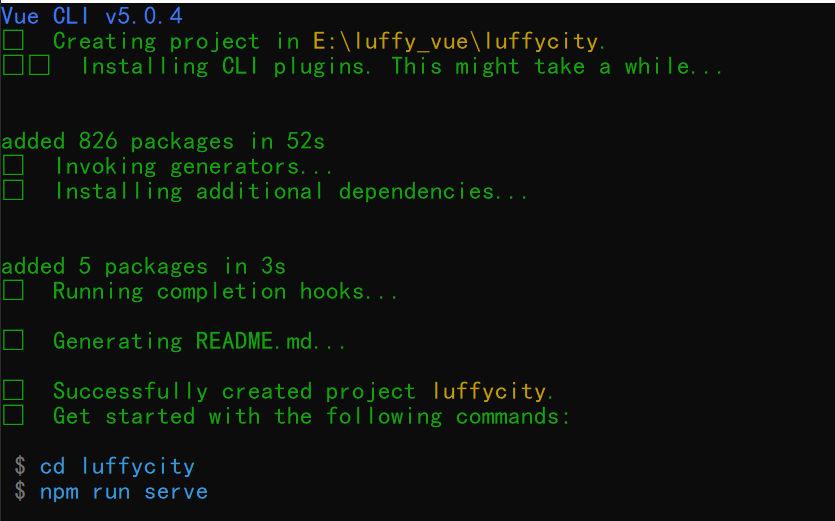
使用pycharm打开配置
-
删除
components/HelloWorld.vue,views/AboutView.vue -
views/HomeView.vue
<template>
<div class="home">
<h1>首页</h1>
</div>
</template>
<script>
export default {
name: 'HomeView',
components: {
}
}
</script>
router/index.js
const routes = [
{
path: '/',
name: 'home',
component: HomeView
},
]
// index.js种routes里删除下面的内容
{
path: '/about',
name: 'about',
// route level code-splitting
// this generates a separate chunk (about.[hash].js) for this route
// which is lazy-loaded when the route is visited.
component: () => import(/* webpackChunkName: "about" */ '../views/AboutView.vue')
}
APP.vue
<template>
<div id="app">
<router-view/>
</div>
</template>
-
集成elementui 、bootstrap、jquery、axios
// elementui ,bootstrap,jquery,axios配置 // axios npm install axios -S // main.js import axios from 'axios' Vue.prototype.$axios = axios; //elementui npm install element-ui -S // main.js import ElementUI from 'element-ui'; import 'element-ui/lib/theme-chalk/index.css'; Vue.use(ElementUI); // bootstrap和jq npm install jquery -S npm install bootstrap@3 -S // vue.config.js const {defineConfig} = require('@vue/cli-service') const webpack = require("webpack"); module.exports = defineConfig({ transpileDependencies: true, configureWebpack: { plugins: [ new webpack.ProvidePlugin({ $: "jquery", jQuery: "jquery", "window.jQuery": "jquery", "window.$": "jquery", Popper: ["popper.js", "default"] }) ] }, }) // main.js,导入 import 'bootstrap' import 'bootstrap/dist/css/bootstrap.min.css'
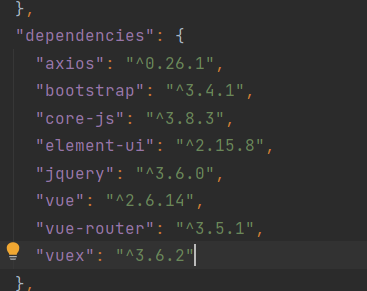
全局css样式配置
assets/css/global.css
/* 声明全局样式和项目的初始化样式 */
body, h1, h2, h3, h4, h5, h6, p, table, tr, td, ul, li, a, form, input, select, option, textarea {
margin: 0;
padding: 0;
font-size: 15px;
}
a {
text-decoration: none;
color: #333;
}
ul {
list-style: none;
}
table {
border-collapse: collapse; /* 合并边框 */
}
main.js
// 把自己定义的global.css 引入
import './assets/css/global.css'
配置文件配置
assets/js/settings.js
export default {
base_url: "http://127.0.0.1:8000"
}
main.js
// 导入自定义配置
import settings from './assets/js/settings'
Vue.prototype.$settings = settings;
标签:name,配置,js,luffy,user,Luffy,import,css,前台 来源: https://www.cnblogs.com/48xz/p/16166747.html